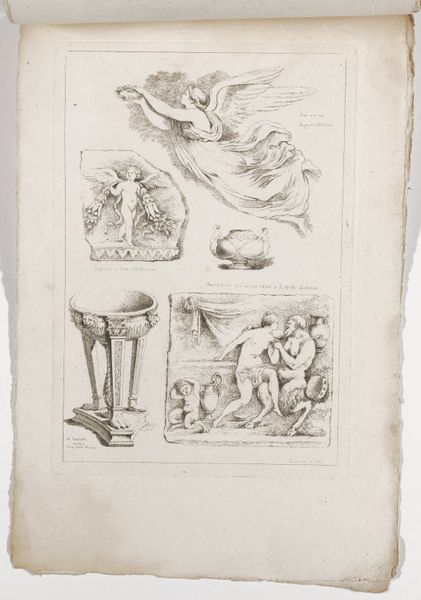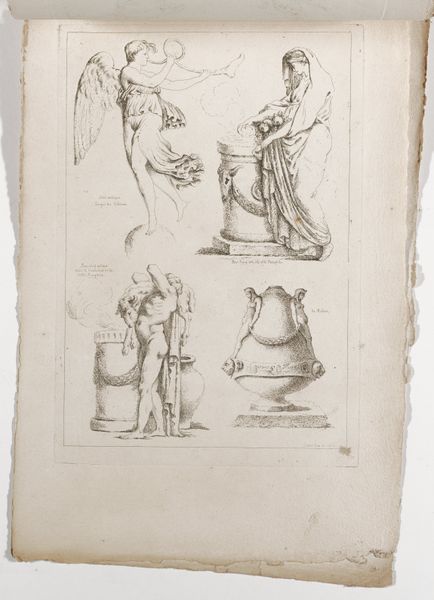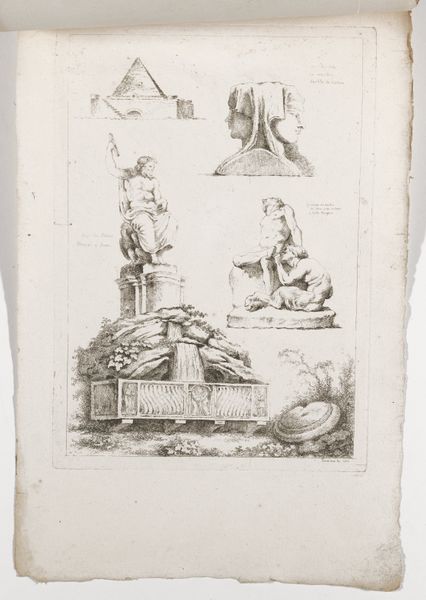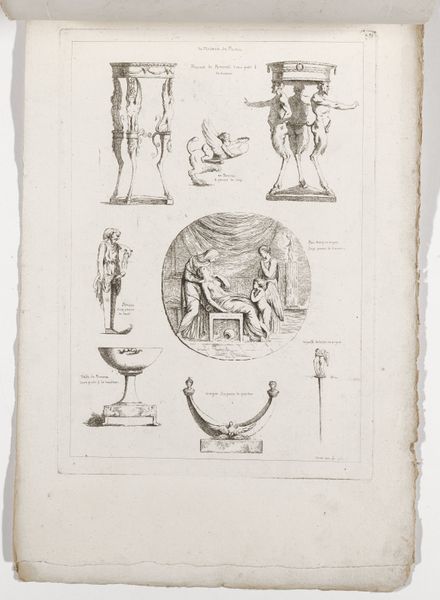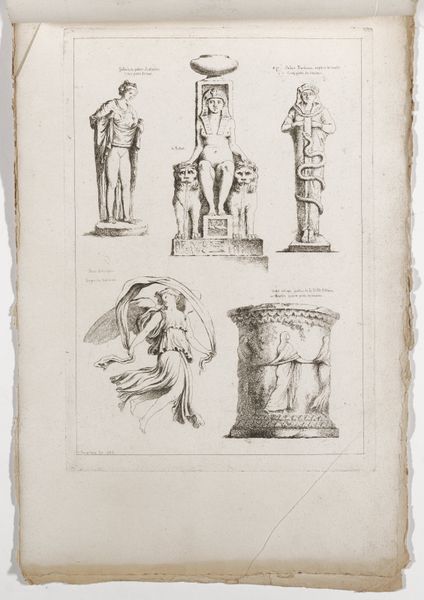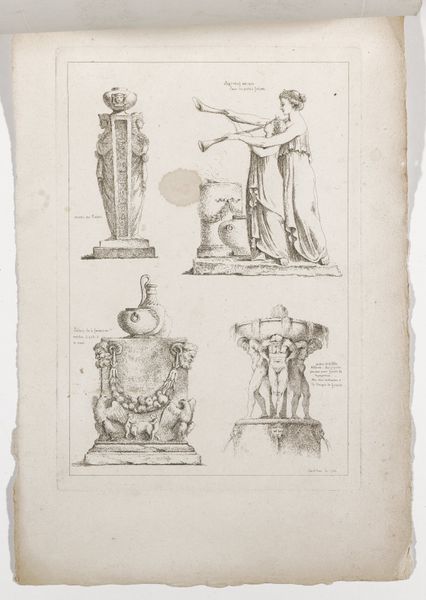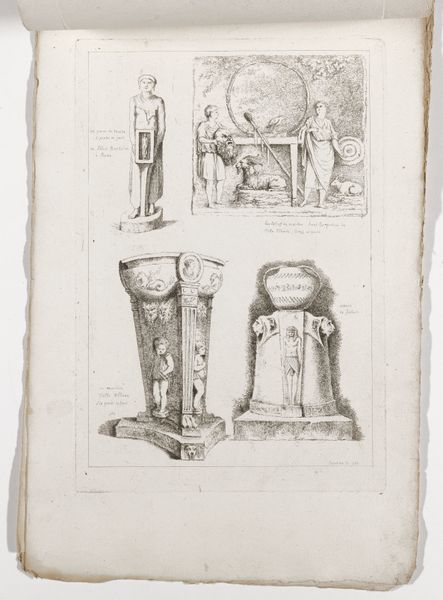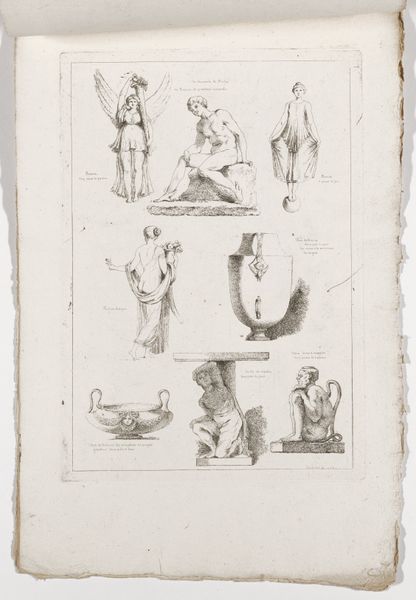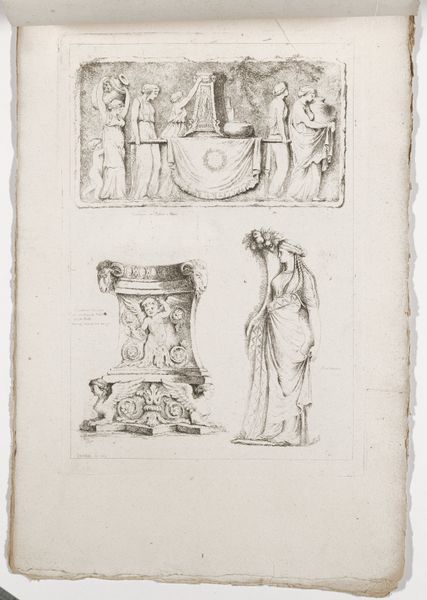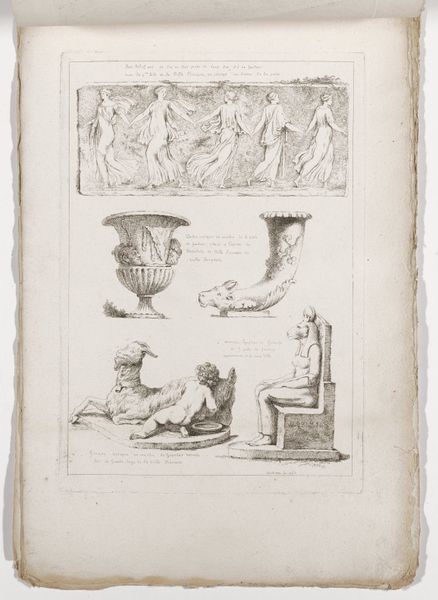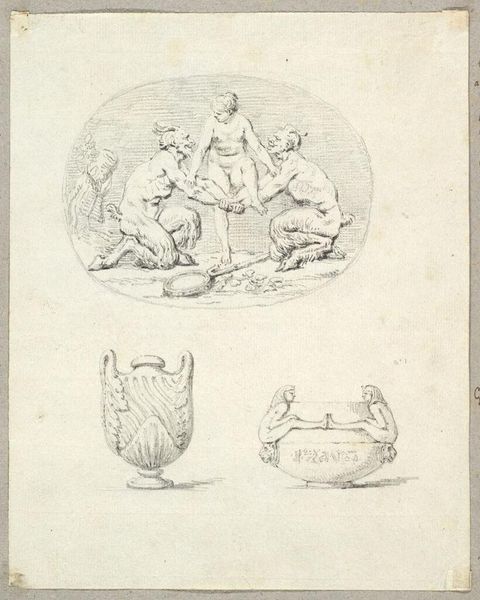
drawing, print, etching, paper, ink
#
portrait
#
drawing
#
neoclacissism
# print
#
etching
#
classical-realism
#
figuration
#
paper
#
ink
#
history-painting
#
academic-art
#
nude
Dimensions: 12 5/8 × 8 7/8 in. (32.07 × 22.54 cm) (plate)17 1/4 × 11 3/16 in. (43.82 × 28.42 cm) (sheet)
Copyright: Public Domain
Curator: This fascinating etching, titled "Fascicule I", was created around 1763 by Jean Claude Richard, Abbé de Saint-Non, and currently resides in the Minneapolis Institute of Art. It presents a page filled with studies of antique sculptures and vases, executed in ink on paper. Editor: My first impression is one of elegant restraint. It feels like peering into the sketchbook of an antiquarian, filled with meticulous renderings imbued with a certain neoclassical coolness. Curator: Exactly. Saint-Non was deeply involved in the artistic and intellectual circles of his time, traveling extensively in Italy. He actually commissioned artists to create drawings which were then turned into prints. These would then circulate in an edition, as educational resources. This plate, in particular, gives us a glimpse into how classical ideals were being disseminated. Editor: The various depictions carry an interesting weight, though. Take the repeated motif of the vase, for example. These vessels, prominently displayed with grotesque masks, held symbolic meaning within classical contexts. They speak of ritual, sacrifice, perhaps even a communion with forces beyond the tangible world. The snake encircling another object recalls symbols for medicine, eternity, transformation. Curator: That's a compelling point. And Saint-Non's project also participates in something bigger—the 18th-century obsession with categorization and encyclopedic knowledge. To think of it within the context of the Enlightenment project, a visual index becomes very potent, especially at a time when many people couldn’t travel to Italy. Editor: It feels as though this plate bridges a gap, connecting the classical world and its rich symbolism to the present. The composition is carefully balanced, drawing my eye from figure to vase. Curator: The artist has captured the way antiquity shaped the cultural imaginary of the Enlightenment. This etching not only served as an educational tool, it reminds us how the past continuously informs the present. Editor: Seeing these symbols afresh like this truly makes me realize that classical antiquity provided a template for many aspects of our aesthetic sensibilities, one that remains incredibly influential.
Comments
minneapolisinstituteofart about 2 years ago
⋮
The Jean-Baptiste Claude Richard (also known by his title abbé Saint-Non) embodied the important role of the amateur, an patron and connoisseur of the arts as well as a practitioner in 18th-century France. He was a skilled networker, a curious, innovative printmaker, and he supported his artist friends in their projects and travels. Saint-Non executed this suite of prints in Paris in 1763, representing antique fragments and reliefs he saw during his travels in Italy from 1759 to 1761. Most of the monuments are identified in the inscriptions by their locations in Rome. The works reflect French artists’ fascination with antiquity at the time, and the way in which these sources were transmitted to a larger public through the circulation of prints. Remarkably the suite of etchings remain as originally issued, in three groups of six deckle-edged sheets stitched together simply along the top edge.
Join the conversation
Join millions of artists and users on Artera today and experience the ultimate creative platform.
